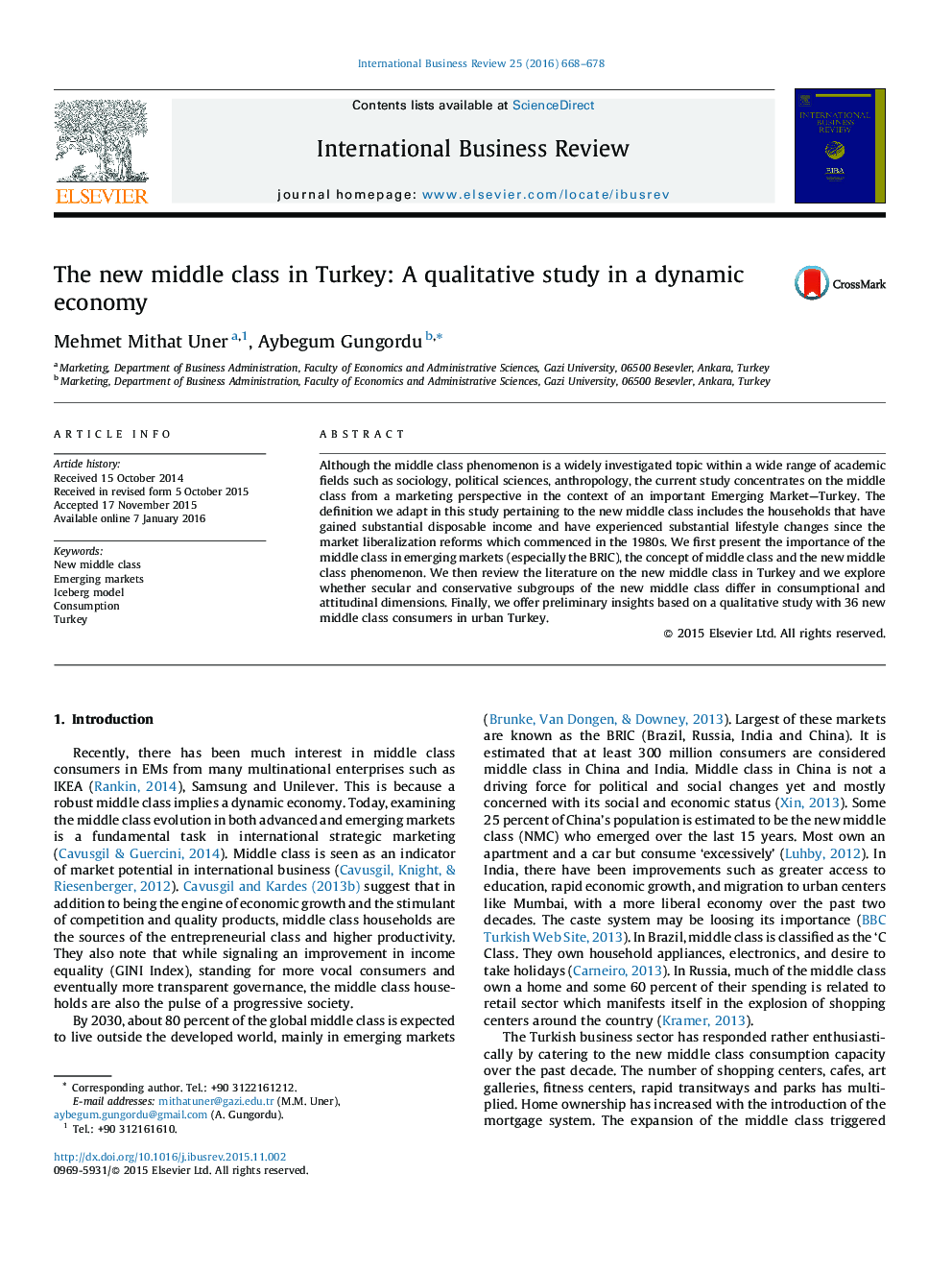| کد مقاله | کد نشریه | سال انتشار | مقاله انگلیسی | نسخه تمام متن |
|---|---|---|---|---|
| 1000202 | 936968 | 2016 | 11 صفحه PDF | دانلود رایگان |
• We examine the NMC considering their education, occupation, ownership of assets, values, expectations and attitudes. We present two clusters according to values as seculars and conservatives. While identifying themselves as middle class, NMC favor income, education, car, lifestyle and culture.
• NMC look mostly for reputation and quality in their purchases.
• If their income is doubled, buying a house is number one priority. As for expectations, conservatives are hopeful for the future, while seculars are desperate.
• Expenditures of the NMC are greatest for food and non-alcoholic beverages. Conservatives seem trying to catch up with seculars in trying new products, going to vacations etc. When they have a child, Turkish NMC is "children oriented" in their expenditures.
Although the middle class phenomenon is a widely investigated topic within a wide range of academic fields such as sociology, political sciences, anthropology, the current study concentrates on the middle class from a marketing perspective in the context of an important Emerging Market—Turkey. The definition we adapt in this study pertaining to the new middle class includes the households that have gained substantial disposable income and have experienced substantial lifestyle changes since the market liberalization reforms which commenced in the 1980s. We first present the importance of the middle class in emerging markets (especially the BRIC), the concept of middle class and the new middle class phenomenon. We then review the literature on the new middle class in Turkey and we explore whether secular and conservative subgroups of the new middle class differ in consumptional and attitudinal dimensions. Finally, we offer preliminary insights based on a qualitative study with 36 new middle class consumers in urban Turkey.
Journal: International Business Review - Volume 25, Issue 3, June 2016, Pages 668–678
